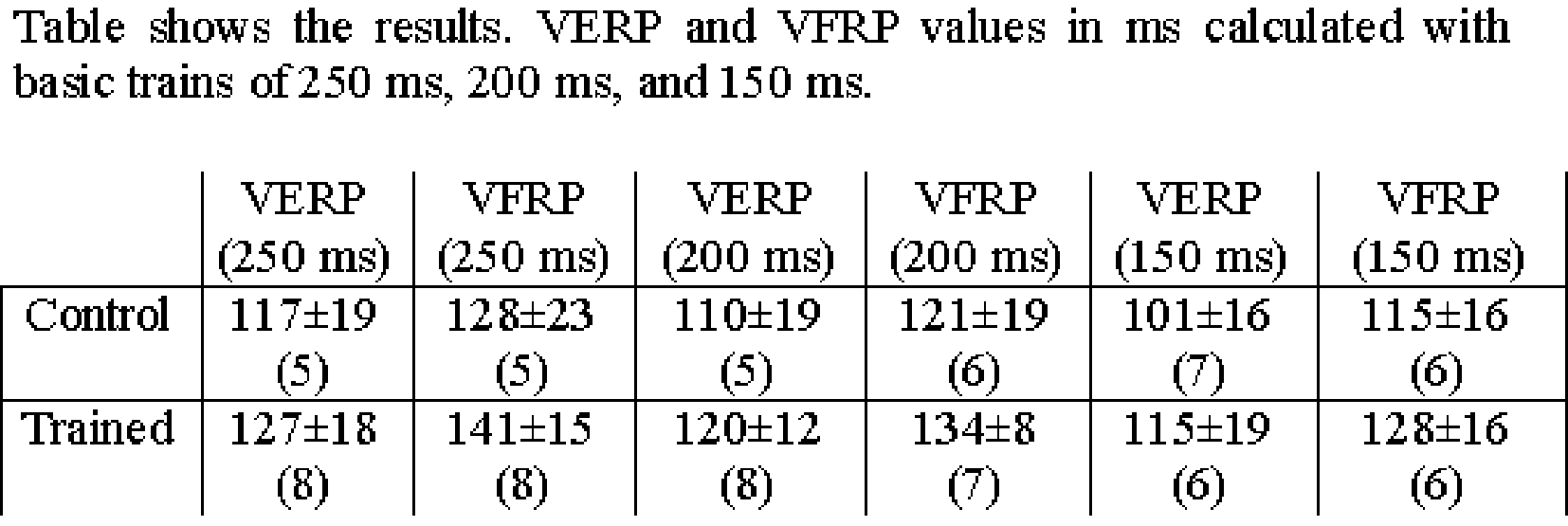Modifications of electrophysiological properties of the myocardium induced by physical training have been classically attributed to the autonomic nervous system adaptation (Katona et al. 1982). We have previously reported that physical training decreases automatism and atrioventricular conduction by myocardial intrinsic mechanisms, which are not due to nervous and/or humoral influences (Such et al. 2002). Nevertheless, the results with respect to the refractoriness were less conclusive. We analyse in the present work the effects of a training programme on intrinsic ventricular refractoriness using an experimental model of isolated rabbit heart, and a modified methodology to explore ventricular refractoriness.
All the procedures were performed in accordance with the agreements of the European Convention of Strasbourg of March 18, 1986 (Instrument of ratification of 8/2/89, Official State Bulletin of 10/25/90). Eight NZW rabbits were submitted to a 6-week endurance exercise training programme, and six controls were not submitted to training. Three days after the chronic exercise programme was finished, rabbits were killed after anaesthesia with ketamine, and the heart excised and isolated in a Langendorff system. Extracellular electrodes were positioned for ventricular pacing and atrial electrograms, and a multiple electrode (121 electrodes) was connected to a computerized epicardic mapping system of the cardiac electric activity (Map Tech) for ventricular electrograms. The following parameters were analysed: ventricle effective refractory period (VERP), and ventricle functional refractory period (VFRP). Refractory periods were analysed by means of extrastimulus test, and three basic ventricular stimuli trains (250, 200 and 150 ms) were employed. Parameters were compared between control and trained groups, and Student’s unpaired t test was used. The results are given in Table 1.
Although no significant differences were observed, our results suggest a tendency towards an increase of intrinsic ventricular refractoriness by training.

